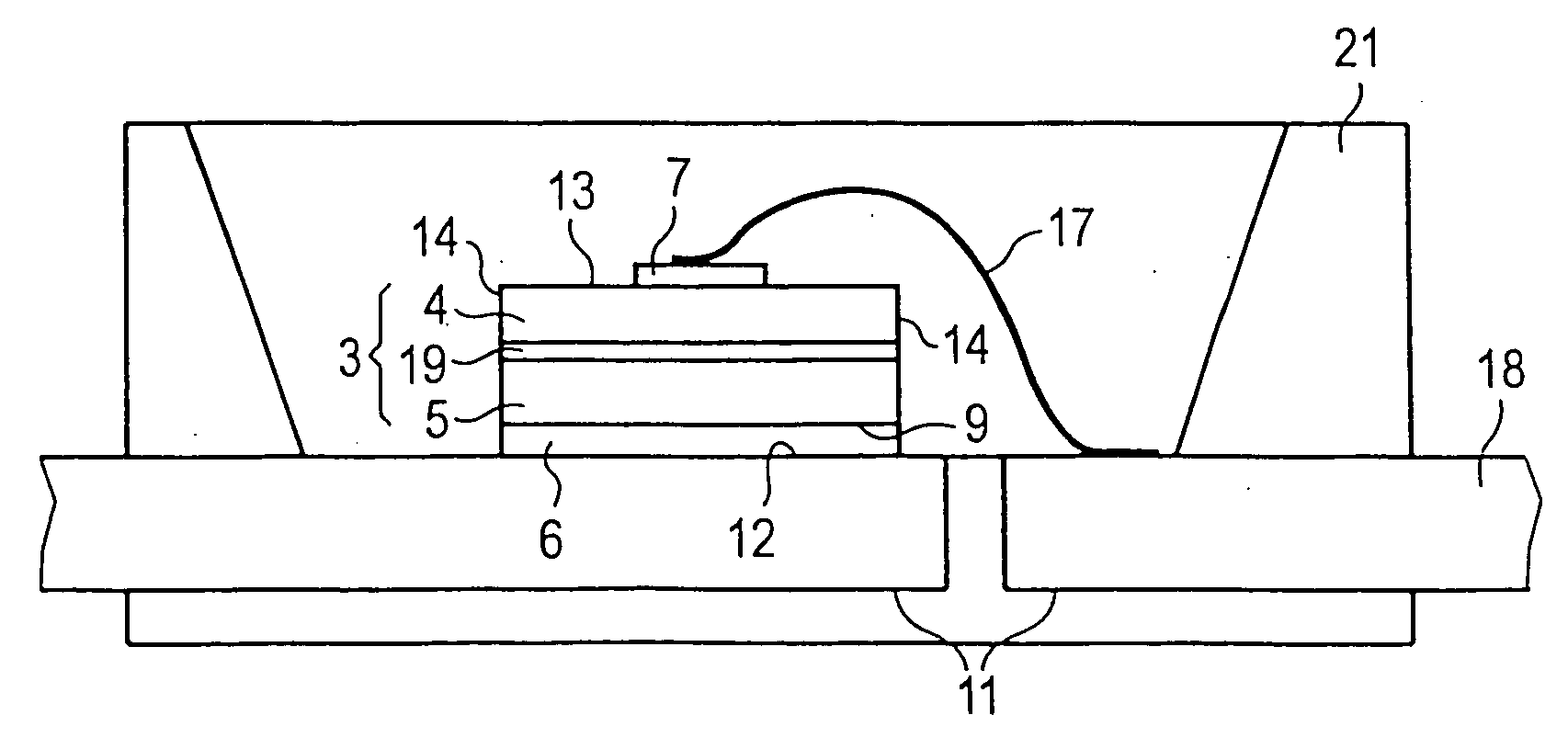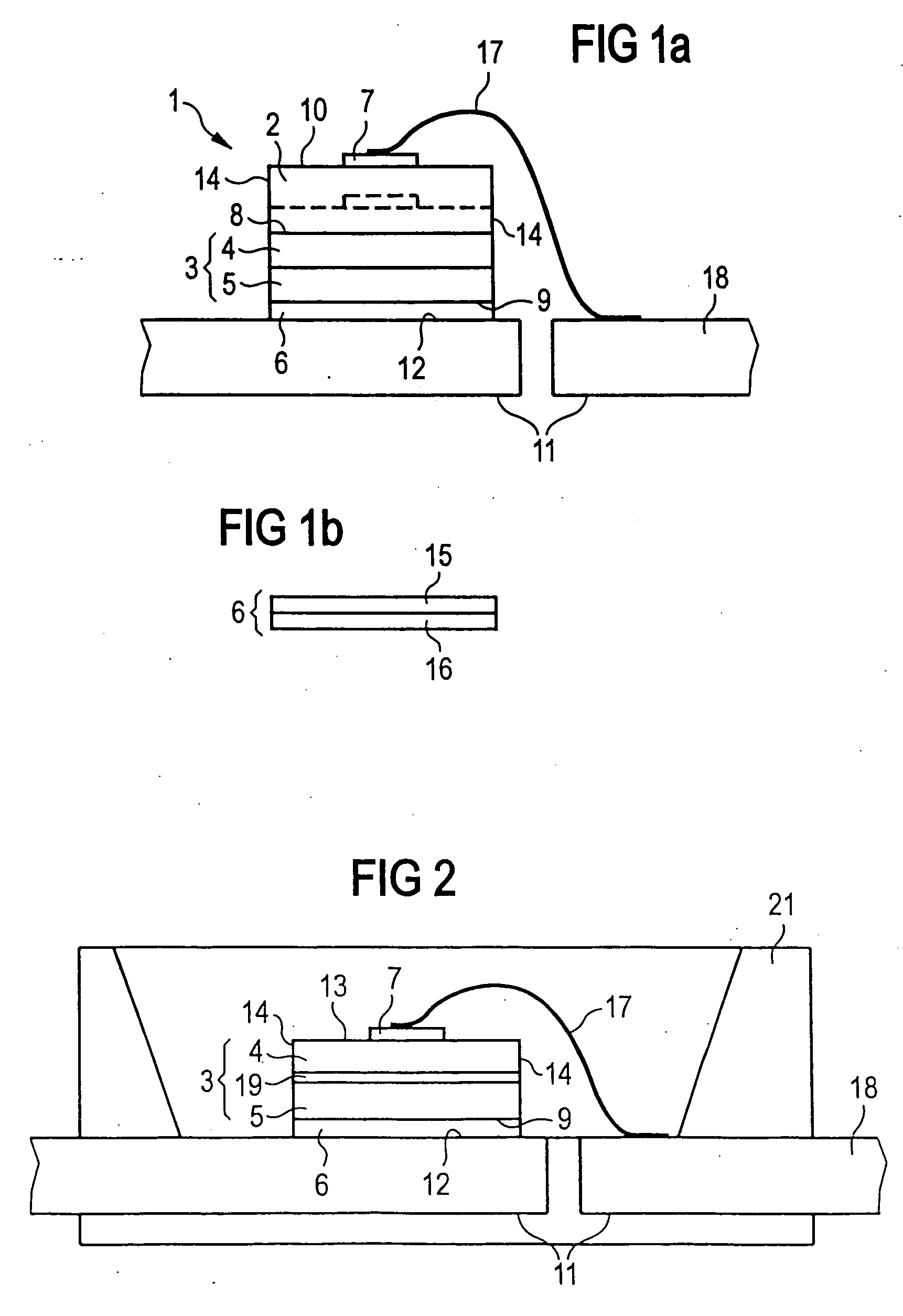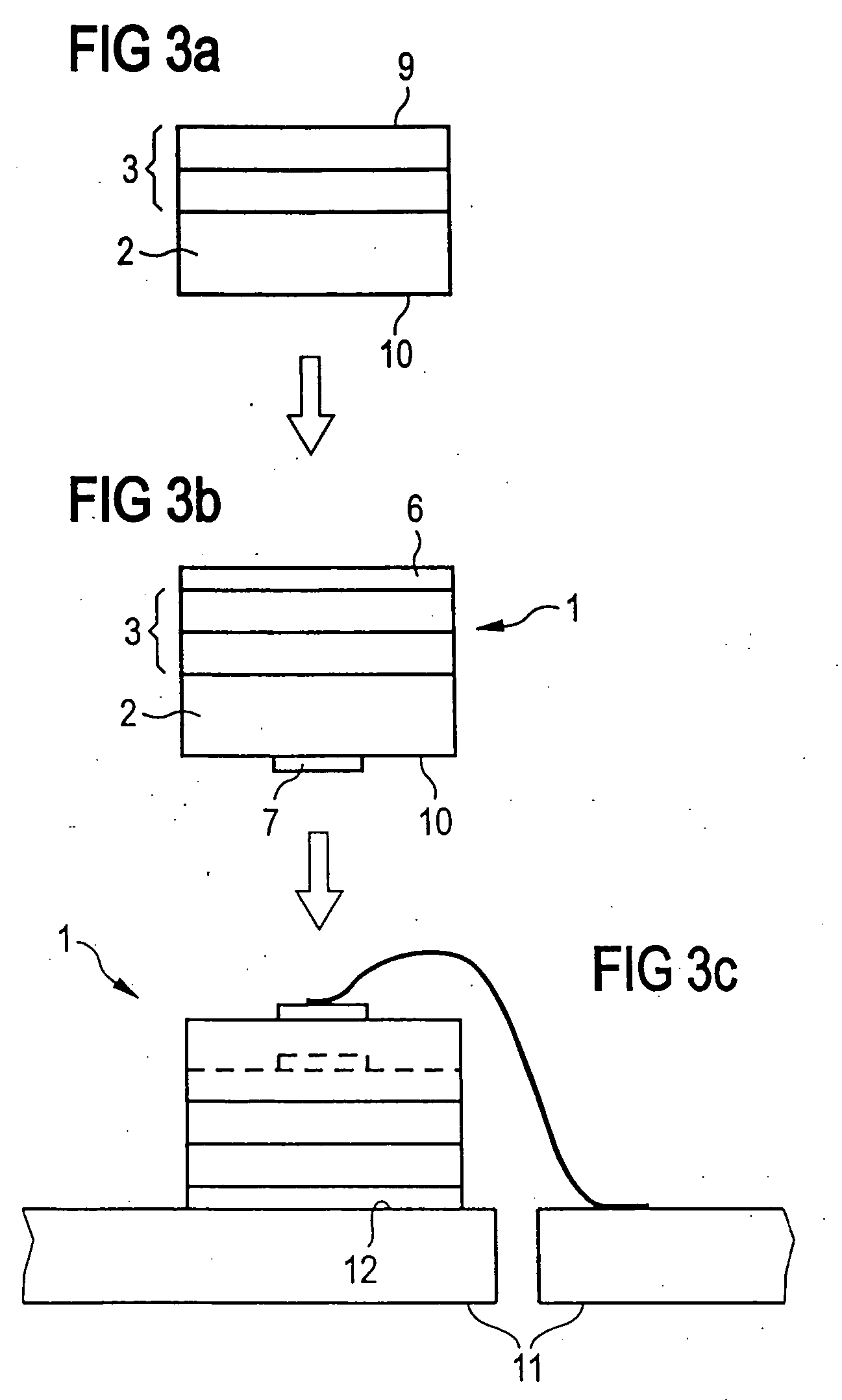GaN-based light emitting-diode chip and a method for producing same
a technology of light-emitting diodes and gan-based layers, which is applied in the direction of basic electric elements, electrical apparatus, and semiconductor devices, can solve the problems of high technical expenditure, insufficient maximum attainable electrical conductivity of p-doped layers, especially of p-doped gan or algan layers, and insufficient economic justification, etc., to achieve the effect of reducing radiation absorption, ideally nonexistent, and improving radiation decoupling
- Summary
- Abstract
- Description
- Claims
- Application Information
AI Technical Summary
Benefits of technology
Problems solved by technology
Method used
Image
Examples
Embodiment Construction
[0030] In the LED chip 1 of FIG. 1a, deposited on an SiC substrate 2 is a radiation-emitting epitaxial layer sequence 3 on an n-type side 8 of the substrate 2. This comprises, for example, an n-type doped GaN or AlGaN epitaxial layer 4 and a p-type doped GaN or AlGaN epitaxial layer 5. There can also be provided, for example, a GaN-based epitaxial layer sequence 3 having a double heterostructure, a single quantum well (SQW) structure or a multi-quantum well (MQW) structure comprising one or more undoped layers 19, for example of InGaN or InGaAlN.
[0031] The SiC substrate 2 is electrically conductive and is opaque to the radiation emitted by epitaxial layer sequence 3.
[0032] The p-side 9 of epitaxial layer sequence 3 facing away from the SiC substrate 2 comprises, deposited over substantially its full area, a reflective, bondable p-contact layer 6. This is composed, for example, substantially of Ag, a PtAg alloy and / or a PdAg alloy.
[0033] However, as illustrated schematically in FI...
PUM
 Login to View More
Login to View More Abstract
Description
Claims
Application Information
 Login to View More
Login to View More - R&D
- Intellectual Property
- Life Sciences
- Materials
- Tech Scout
- Unparalleled Data Quality
- Higher Quality Content
- 60% Fewer Hallucinations
Browse by: Latest US Patents, China's latest patents, Technical Efficacy Thesaurus, Application Domain, Technology Topic, Popular Technical Reports.
© 2025 PatSnap. All rights reserved.Legal|Privacy policy|Modern Slavery Act Transparency Statement|Sitemap|About US| Contact US: help@patsnap.com



